2025
|
| Honěk, Alois; Martinková, Zdenka; Novák, Ivo; Jauschová, Terézia; Sarvašová, Lenka; Saniga, Miroslav; Holecová, Milada; Kulfan, Ján; Zach, Peter Seasonal flight activity and the length of the generation period of selected Noctuidae (Lepidoptera) –extent and causes of variation Journal Article Folia Oecologica, 52 (2), pp. 189–201, 2025, ISSN: 1338-7014. Links | BibTeX @article{Hon_k_2025,
title = {Seasonal flight activity and the length of the generation period of selected Noctuidae (Lepidoptera) –extent and causes of variation},
author = {Alois Honěk and Zdenka Martinková and Ivo Novák and Terézia Jauschová and Lenka Sarvašová and Miroslav Saniga and Milada Holecová and Ján Kulfan and Peter Zach},
url = {http://ife.sk/wp-content/uploads/2020/09/foecol-2025-0018.pdf},
doi = {10.2478/foecol-2025-0018},
issn = {1338-7014},
year = {2025},
date = {2025-07-01},
journal = {Folia Oecologica},
volume = {52},
number = {2},
pages = {189--201},
publisher = {Walter de Gruyter GmbH},
keywords = {},
pubstate = {published},
tppubtype = {article}
}
|
2024
|
| Jauschová, Terézia; Sarvašová, Lenka; Saniga, Miroslav; Langraf, Vladimír; Holecová, Milada; Honěk, Alois; Martinková, Zdenka; Skuhrovec, Jiří; Kulfan, Ján; Zach, Peter Ladybird (Coleoptera, Coccinellidae) communities on nonnative blue spruce in central Europe Journal Article Folia Oecologica, 51 (1), pp. 18–28, 2024, ISSN: 1338-7014. Abstract | Links | BibTeX @article{Jauschov__2024,
title = {Ladybird (Coleoptera, Coccinellidae) communities on nonnative blue spruce in central Europe},
author = {Terézia Jauschová and Lenka Sarvašová and Miroslav Saniga and Vladimír Langraf and Milada Holecová and Alois Honěk and Zdenka Martinková and Jiří Skuhrovec and Ján Kulfan and Peter Zach},
url = {http://ife.sk/wp-content/uploads/2020/09/10.2478_foecol-2024-0002.pdf},
doi = {10.2478/foecol-2024-0002},
issn = {1338-7014},
year = {2024},
date = {2024-01-01},
journal = {Folia Oecologica},
volume = {51},
number = {1},
pages = {18–28},
publisher = {Walter de Gruyter GmbH},
abstract = {Blue spruce (Picea pungens) has been planted in urban greenery as an ornamental tree in central Europe for more than 150 years. We investigated whether this nonnative spruce is a convenient habitat for ladybirds (Coleoptera, Coccinellidae). In 2021 and 2022, adults and larvae were sampled in four towns in Slovakia at monthly intervals throughout the growing season, from April to October. We recorded adults of 27 species and larvae of 11 ladybird species. Conifer specialist ladybird species predominated both in adult and larval communities (adults – 9 species, 85.2% of all individuals; larvae – 7 species, 92.1% of all individuals). Exochomus quadripustulatus and Aphidecta obliterata were the most common in adult (31.8% and 33.5% of all individuals, respectively) and larval (57.5% and 25.1% of all individuals, respectively) communities. The most abundant generalist species was nonnative invasive Harmonia axyridis (adults – 5.6%, larvae – 6.8% of all individuals). Adults and larvae of ladybirds were more abundant on solitary trees than on trees growing in groups. Our results confirmed that blue spruce hosts rich ladybird communities and provides them shelter and food resources.},
keywords = {},
pubstate = {published},
tppubtype = {article}
}
Blue spruce (Picea pungens) has been planted in urban greenery as an ornamental tree in central Europe for more than 150 years. We investigated whether this nonnative spruce is a convenient habitat for ladybirds (Coleoptera, Coccinellidae). In 2021 and 2022, adults and larvae were sampled in four towns in Slovakia at monthly intervals throughout the growing season, from April to October. We recorded adults of 27 species and larvae of 11 ladybird species. Conifer specialist ladybird species predominated both in adult and larval communities (adults – 9 species, 85.2% of all individuals; larvae – 7 species, 92.1% of all individuals). Exochomus quadripustulatus and Aphidecta obliterata were the most common in adult (31.8% and 33.5% of all individuals, respectively) and larval (57.5% and 25.1% of all individuals, respectively) communities. The most abundant generalist species was nonnative invasive Harmonia axyridis (adults – 5.6%, larvae – 6.8% of all individuals). Adults and larvae of ladybirds were more abundant on solitary trees than on trees growing in groups. Our results confirmed that blue spruce hosts rich ladybird communities and provides them shelter and food resources. |
2022
|
 | Marešová, Jana; Húdoková, Hana; Sarvašová, Lenka; Fleischer, Peter; Ditmarová, Ľubica; Blaženec, Miroslav; Jamnická, Gabriela Dynamics of internal isoprenoid metabolites in young Picea abies (Norway spruce) shoots during drought stress conditions in springtime Journal Article Phytochemistry, 203 , pp. 113414, 2022, ISSN: 0031-9422. Links | BibTeX @article{Mare_ov__2022,
title = {Dynamics of internal isoprenoid metabolites in young Picea abies (Norway spruce) shoots during drought stress conditions in springtime},
author = {Jana Marešová and Hana Húdoková and Lenka Sarvašová and Peter Fleischer and Ľubica Ditmarová and Miroslav Blaženec and Gabriela Jamnická},
url = {http://dx.doi.org/10.1016/j.phytochem.2022.113414},
doi = {10.1016/j.phytochem.2022.113414},
issn = {0031-9422},
year = {2022},
date = {2022-01-01},
journal = {Phytochemistry},
volume = {203},
pages = {113414},
publisher = {Elsevier BV},
keywords = {},
pubstate = {published},
tppubtype = {article}
}
|
2021
|
 | Sarvašová, Lenka; Zach, Peter; Parák, Michal; Saniga, Miroslav; Kulfan, Ján Infestation of Early- and Late-Flushing Trees by Spring Caterpillars: An Associational Effect of Neighbouring Trees Journal Article Forests, 12 (9), pp. 1281, 2021, ISSN: 1999-4907. Links | BibTeX @article{Sarva_ov__2021,
title = {Infestation of Early- and Late-Flushing Trees by Spring Caterpillars: An Associational Effect of Neighbouring Trees},
author = {Lenka Sarvašová and Peter Zach and Michal Parák and Miroslav Saniga and Ján Kulfan},
url = {http://dx.doi.org/10.3390/f12091281},
doi = {10.3390/f12091281},
issn = {1999-4907},
year = {2021},
date = {2021-01-01},
journal = {Forests},
volume = {12},
number = {9},
pages = {1281},
publisher = {MDPI AG},
keywords = {},
pubstate = {published},
tppubtype = {article}
}
|
2020
|
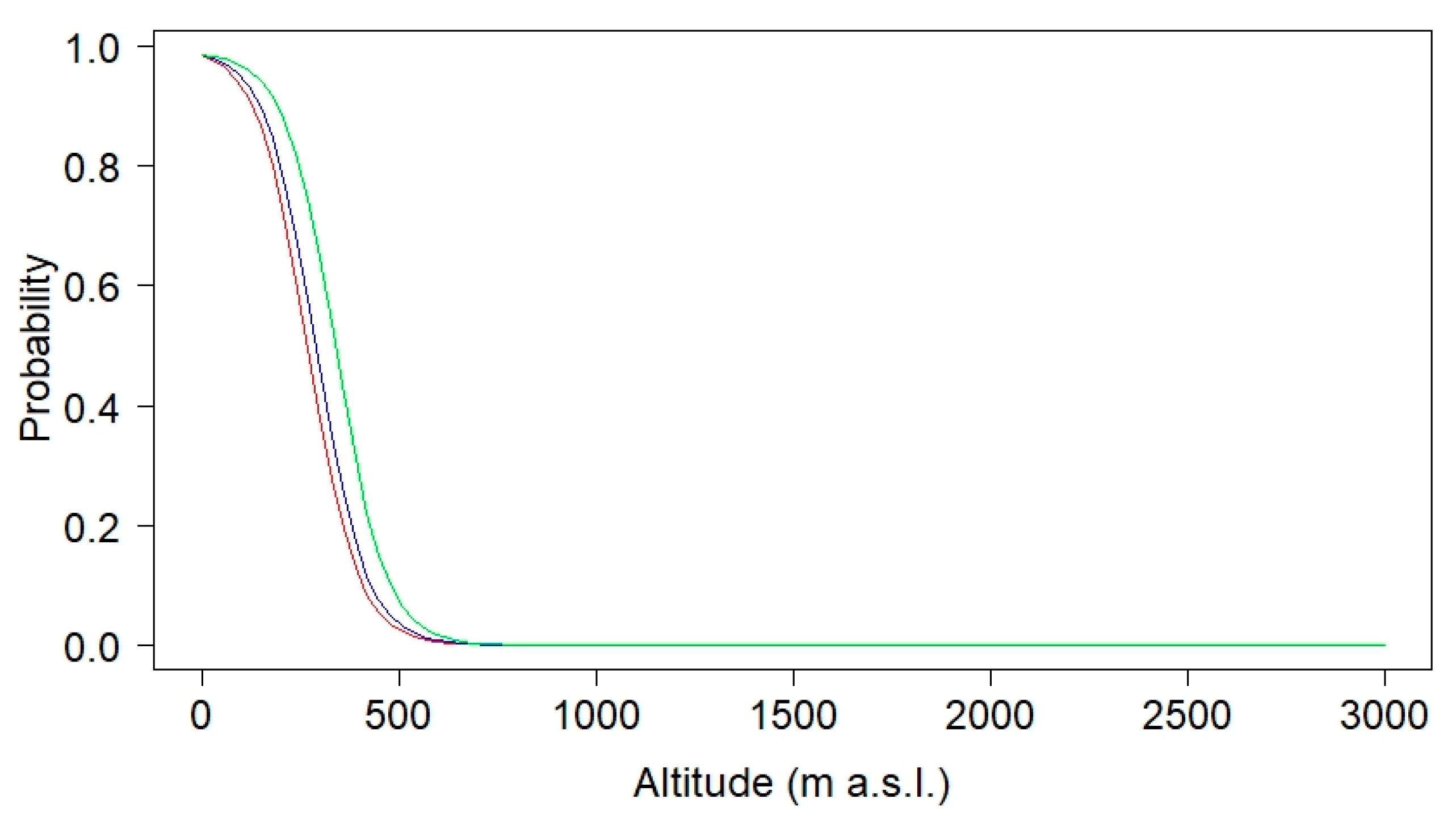 | Kulfan, Ján; Zach, Peter; Holec, Juraj; Brown, Peter M J; Sarvašová, Lenka; Skuhrovec, Jiří; Martinková, Zdenka; Honěk, Alois; Váľka, Jozef; Holecová, Milada; Saniga, Miroslav The Invasive Box Tree Moth Five Years after Introduction in Slovakia: Damage Risk to Box Trees in Urban Habitats Journal Article Forests, 11 (9), 2020, ISSN: 1999-4907. Abstract | Links | BibTeX @article{Kulfan2020b,
title = {The Invasive Box Tree Moth Five Years after Introduction in Slovakia: Damage Risk to Box Trees in Urban Habitats},
author = {Ján Kulfan and Peter Zach and Juraj Holec and Peter M.J. Brown and Lenka Sarvašová and Jiří Skuhrovec and Zdenka Martinková and Alois Honěk and Jozef Váľka and Milada Holecová and Miroslav Saniga},
doi = {10.3390/f11090999},
issn = {1999-4907},
year = {2020},
date = {2020-09-17},
journal = {Forests},
volume = {11},
number = {9},
abstract = {The box tree moth Cydalima perspectalis (Walker, 1859) (Lepidoptera: Crambidae) is an invasive species in Europe and a serious pest of box trees (Buxus spp.). In Slovakia, Central Europe, it was first reported in 2012 within the low elevation region with a warm climate. We hypothesize that the cold mountain region of Slovakia would provide less suitable conditions for the spread of this species, indicated by no or only slight damage to box trees. Five years after C. perspectalis was first recorded in Slovakia, we assessed the probability of occurrence of the moth and the probability of damage to box trees (Buxus sempervirens) by its larvae, using temperature and altitude data as predictors. In June and July 2017, at 156 locations (towns and villages) between the altitudes of 109 and 888 m, we recorded damage and categorized the intensity of damage to box trees by C. perspectalis using a four-point scale. Box trees infested by C. perspectalis were recorded in most locations at altitudes between 110 and 400 m with the mean annual temperature varying between 10.5 and 7.9 °C. High damage to box trees was found in locations up to 340 m a.s.l. characterized by mean annual temperatures above 8.5 °C. Our results suggested high probability (>60%) of any damage to box trees for the area up to approximately 300 m a.s.l. (mean annual temperature above 8.4 °C), and high probability (>60%) of high damage for the area up to approximately 250 m a.s.l. (mean annual temperature above 9 °C). The area where damage to box trees was predicted using the altitude showed great overlap with the area predicted using the mean annual temperature. The area with the probability of any damage was only slightly larger than the area with the probability of high damage.},
keywords = {},
pubstate = {published},
tppubtype = {article}
}
The box tree moth Cydalima perspectalis (Walker, 1859) (Lepidoptera: Crambidae) is an invasive species in Europe and a serious pest of box trees (Buxus spp.). In Slovakia, Central Europe, it was first reported in 2012 within the low elevation region with a warm climate. We hypothesize that the cold mountain region of Slovakia would provide less suitable conditions for the spread of this species, indicated by no or only slight damage to box trees. Five years after C. perspectalis was first recorded in Slovakia, we assessed the probability of occurrence of the moth and the probability of damage to box trees (Buxus sempervirens) by its larvae, using temperature and altitude data as predictors. In June and July 2017, at 156 locations (towns and villages) between the altitudes of 109 and 888 m, we recorded damage and categorized the intensity of damage to box trees by C. perspectalis using a four-point scale. Box trees infested by C. perspectalis were recorded in most locations at altitudes between 110 and 400 m with the mean annual temperature varying between 10.5 and 7.9 °C. High damage to box trees was found in locations up to 340 m a.s.l. characterized by mean annual temperatures above 8.5 °C. Our results suggested high probability (>60%) of any damage to box trees for the area up to approximately 300 m a.s.l. (mean annual temperature above 8.4 °C), and high probability (>60%) of high damage for the area up to approximately 250 m a.s.l. (mean annual temperature above 9 °C). The area where damage to box trees was predicted using the altitude showed great overlap with the area predicted using the mean annual temperature. The area with the probability of any damage was only slightly larger than the area with the probability of high damage. |
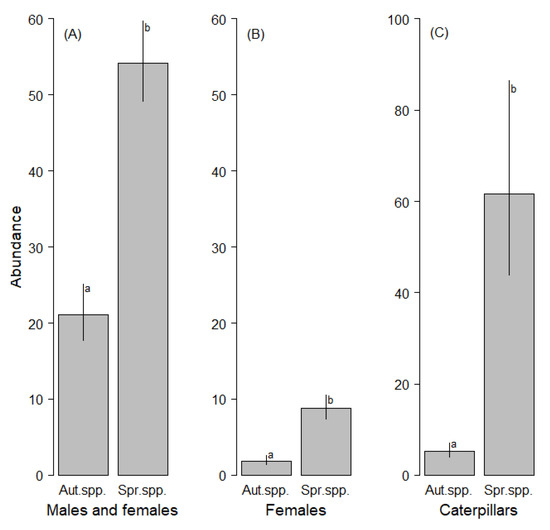 | Sarvašová, Lenka; Kulfan, Ján; Saniga, Miroslav; Zúbrik, Milan; Zach, Peter Winter geometrid moths in oak forests : Is monitoring a single species reliable to predict defoliation risk? Journal Article Forests, 11 (3), 2020, ISSN: 1999-4907. Abstract | Links | BibTeX @article{Sarvašová2020,
title = {Winter geometrid moths in oak forests : Is monitoring a single species reliable to predict defoliation risk?},
author = {Lenka Sarvašová and Ján Kulfan and Miroslav Saniga and Milan Zúbrik and Peter Zach},
doi = {https://doi.org/10.3390/f11030288},
issn = {1999-4907},
year = {2020},
date = {2020-03-02},
journal = {Forests},
volume = {11},
number = {3},
abstract = {Species within the group of winter moths (Geometridae) are important oak defoliators in European forests. Adults of these species emerge either in late autumn (‘autumn species’) or in early spring (‘spring species’), and caterpillars of both ‘autumn’ and ‘spring’ species appear in spring. The abundance of adults assessed by regular monitoring allows the prediction of the defoliation intensity in trees by caterpillars in the following spring. ‘Autumn species’ (mostly a single one, Operophtera brumata) are monitored by forestry practices as pests, whereas ‘spring species’ are often not paid any attention. We hypothesised that ‘spring species’ could also have an important share in caterpillar assemblages in oak forests. We aimed to study the proportions between ‘autumn’ and ‘spring’ species in adult and larval stages. In a xeric thermophilous oak forest in southern Slovakia, Central Europe, we collected adult moths using sticky bands set up on trunks of Quercus pubescens during the winter of 2014–2015 and caterpillars from other trees belonging to the same oak species over the following spring. We also captured caterpillars from several oak species in various areas and over different years in Slovakia and Bulgaria, and we compiled relevant literature data. ‘Spring species’ recorded from a unique forest as adults during winter and as caterpillars in the following spring were significantly more abundant than ‘autumn species.’ Moreover, ‘spring species’ from Slovakian forests, regardless of the locality, the oak species and the year of sampling, reached high proportions, mostly over 50% of individuals in caterpillar assemblages. The ‘spring species’ Agriopis leucophaearia was the most abundant, followed by the ‘autumn species’ Operophtera brumata. ‘Spring species’ accounted for more than 50% of individuals in caterpillar assemblages in the Balkan Peninsula (Bulgaria) concerning one case, and they were of little importance in northern Greece. We recommend monitoring all winter moth adults (‘autumn’ and ‘spring’ species together) continuously in forestry practices, using sticky bands on oak trees from late autumn to early spring.},
keywords = {},
pubstate = {published},
tppubtype = {article}
}
Species within the group of winter moths (Geometridae) are important oak defoliators in European forests. Adults of these species emerge either in late autumn (‘autumn species’) or in early spring (‘spring species’), and caterpillars of both ‘autumn’ and ‘spring’ species appear in spring. The abundance of adults assessed by regular monitoring allows the prediction of the defoliation intensity in trees by caterpillars in the following spring. ‘Autumn species’ (mostly a single one, Operophtera brumata) are monitored by forestry practices as pests, whereas ‘spring species’ are often not paid any attention. We hypothesised that ‘spring species’ could also have an important share in caterpillar assemblages in oak forests. We aimed to study the proportions between ‘autumn’ and ‘spring’ species in adult and larval stages. In a xeric thermophilous oak forest in southern Slovakia, Central Europe, we collected adult moths using sticky bands set up on trunks of Quercus pubescens during the winter of 2014–2015 and caterpillars from other trees belonging to the same oak species over the following spring. We also captured caterpillars from several oak species in various areas and over different years in Slovakia and Bulgaria, and we compiled relevant literature data. ‘Spring species’ recorded from a unique forest as adults during winter and as caterpillars in the following spring were significantly more abundant than ‘autumn species.’ Moreover, ‘spring species’ from Slovakian forests, regardless of the locality, the oak species and the year of sampling, reached high proportions, mostly over 50% of individuals in caterpillar assemblages. The ‘spring species’ Agriopis leucophaearia was the most abundant, followed by the ‘autumn species’ Operophtera brumata. ‘Spring species’ accounted for more than 50% of individuals in caterpillar assemblages in the Balkan Peninsula (Bulgaria) concerning one case, and they were of little importance in northern Greece. We recommend monitoring all winter moth adults (‘autumn’ and ‘spring’ species together) continuously in forestry practices, using sticky bands on oak trees from late autumn to early spring. |
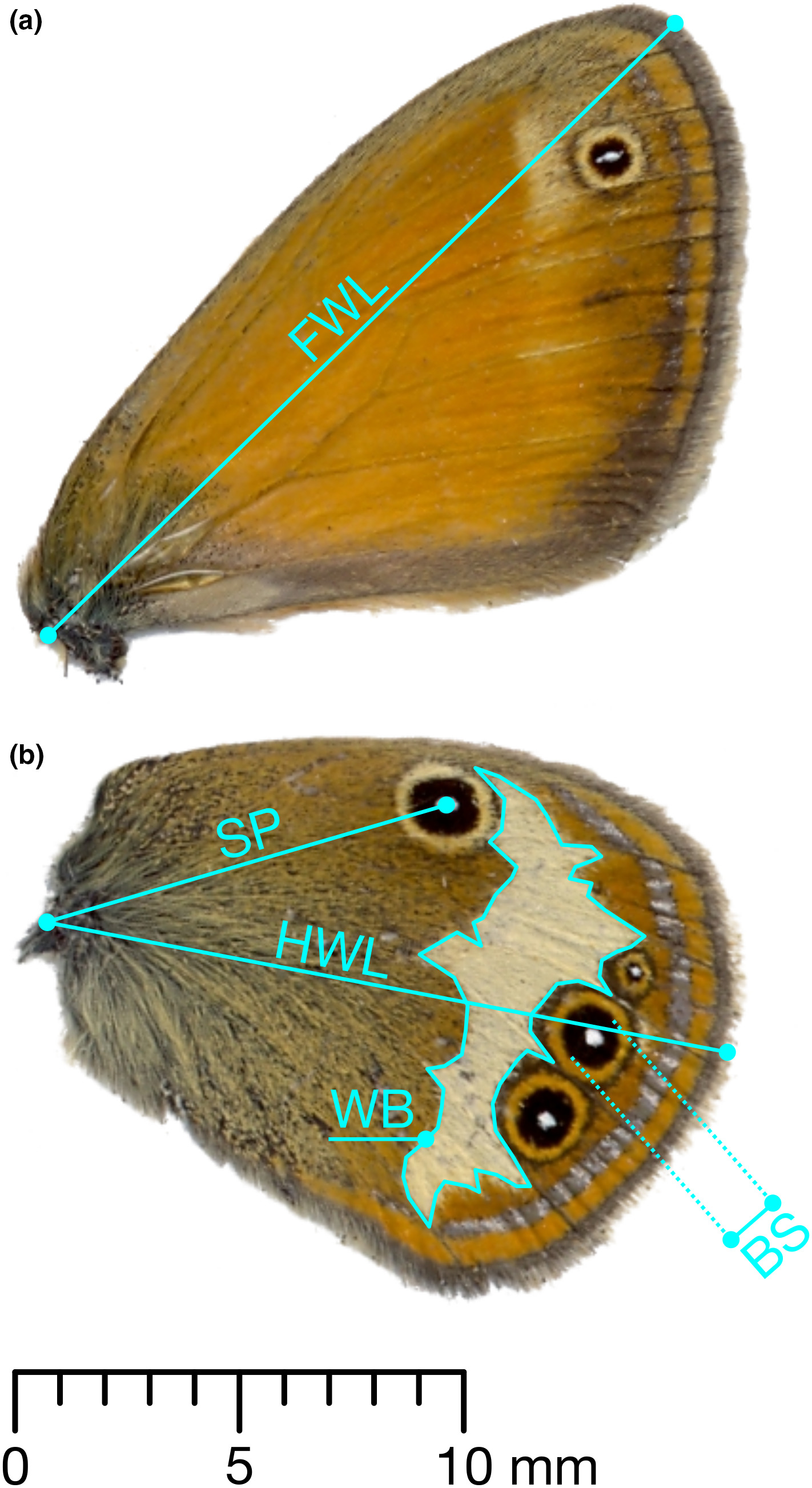 | Cassel‐Lundhagen, Anna; Schmitt, Thomas; Wahlberg, Niklas; Sarvašová, Lenka; Konvička, Martin; Ryrholm, Nils; Kaňuch, Peter Wing morphology of the butterfly Coenonympha arcania in Europe: Traces of both historical isolation in glacial refugia and current adaptation Journal Article Journal of Zoological Systematics & Evolutionary Research, 58 (4), pp. 929-943, 2020, ISSN: 0947-5745. Abstract | Links | BibTeX @article{Cassel‐Lundhagen2020,
title = {Wing morphology of the butterfly \textit{Coenonympha arcania} in Europe: Traces of both historical isolation in glacial refugia and current adaptation},
author = {Anna Cassel‐Lundhagen and Thomas Schmitt and Niklas Wahlberg and Lenka Sarvašová and Martin Konvička and Nils Ryrholm and Peter Kaňuch},
doi = {10.1111/jzs.12360},
issn = {0947-5745},
year = {2020},
date = {2020-01-08},
journal = {Journal of Zoological Systematics & Evolutionary Research},
volume = {58},
number = {4},
pages = {929-943},
abstract = {In this study, we examined the evolutionary outcome of and interplay between historic isolation and current selection pressures on traits more or less closely connected to fitness in the Pearly Heath butterfly (Coenonympha arcania) across its range in Europe. We hypothesized that a trait mean is more related to historic events if it has low connection to fitness, while a trait more closely connected with fitness is expected to have a mean that relates more to current selection pressures. In order to test this, we collected 322 butterflies from across the species range in Europe and measured five wing traits relating to size and color patterns. To infer a phylogeographic history for each individual, we sequenced a 594 bp fragment of the COI gene. The morphological data were then analyzed in relation to selected climatic variables and the history of individuals to disentangle which factors best correlated with morphological variation. The results supported our hypothesis in that wing sizes correlated with summer precipitation but not with its inferred location during the last glaciation. Eyespot position, on the other hand, correlated with the history of individuals but not with the analyzed climatic indicators. The sizes of the black spot and the white band, two traits that were expected to have intermediate selection pressure, were associated with both history and current conditions. Thus, this study illustrates the fascinating interplay between events and processes that lead to a specific evolutionary outcome.},
keywords = {},
pubstate = {published},
tppubtype = {article}
}
In this study, we examined the evolutionary outcome of and interplay between historic isolation and current selection pressures on traits more or less closely connected to fitness in the Pearly Heath butterfly (Coenonympha arcania) across its range in Europe. We hypothesized that a trait mean is more related to historic events if it has low connection to fitness, while a trait more closely connected with fitness is expected to have a mean that relates more to current selection pressures. In order to test this, we collected 322 butterflies from across the species range in Europe and measured five wing traits relating to size and color patterns. To infer a phylogeographic history for each individual, we sequenced a 594 bp fragment of the COI gene. The morphological data were then analyzed in relation to selected climatic variables and the history of individuals to disentangle which factors best correlated with morphological variation. The results supported our hypothesis in that wing sizes correlated with summer precipitation but not with its inferred location during the last glaciation. Eyespot position, on the other hand, correlated with the history of individuals but not with the analyzed climatic indicators. The sizes of the black spot and the white band, two traits that were expected to have intermediate selection pressure, were associated with both history and current conditions. Thus, this study illustrates the fascinating interplay between events and processes that lead to a specific evolutionary outcome. |
 | Kulfan, Ján; Dzurenko, Marek; Parák, Michal; Sarvašová, Lenka; Saniga, Miroslav; Brown, Peter; Zach, Peter Larval feeding of Cydalima perspectalis on box trees with a focus on the spatial and temporal distribution Journal Article Plant Protection Science, 11 , 2020, ISSN: 1212-2580. Abstract | Links | BibTeX @article{Kulfan2020,
title = {Larval feeding of \textit{Cydalima perspectalis} on box trees with a focus on the spatial and temporal distribution},
author = {Ján Kulfan and Marek Dzurenko and Michal Parák and Lenka Sarvašová and Miroslav Saniga and Peter Brown and Peter Zach},
doi = {10.17221/126/2019-PPS},
issn = {1212-2580},
year = {2020},
date = {2020-01-01},
journal = {Plant Protection Science},
volume = {11},
abstract = {The box tree moth Cydalima perspectalis is an invasive pest on box trees originating from Eastern Asia which spread throughout Europe. We assessed the efficacy of photo-eclectors (emergence boxes) for the detection of its larvae. We also investigated their spatial distribution on the hosts and the spatial and temporal distribution of the leaf damage caused by this pest in Slovakia. Our results showed non-uniform vertical distribution of the overwintering larvae and leaf damage on the trees. The larval abundance in the spring was significantly affected by the height of the branches above the ground. During spring, the larvae occurred most abundantly in the upper parts of the trees. The leaf damage was greatest in the lower parts throughout the growing season. During the progress of the infestation, the development of the damage in the lower and middle parts was similar. In the upper part, the initial increase in the damage was slow, but accelerated four months before the complete defoliation. The field estimation of the proportion of damaged leaves and the accurate assessment based on counting the damaged leaves suggest a consistency between these estimates. Hence, a quick field estimation of the leaf damage may be utilised by horticultural practices.},
keywords = {},
pubstate = {published},
tppubtype = {article}
}
The box tree moth Cydalima perspectalis is an invasive pest on box trees originating from Eastern Asia which spread throughout Europe. We assessed the efficacy of photo-eclectors (emergence boxes) for the detection of its larvae. We also investigated their spatial distribution on the hosts and the spatial and temporal distribution of the leaf damage caused by this pest in Slovakia. Our results showed non-uniform vertical distribution of the overwintering larvae and leaf damage on the trees. The larval abundance in the spring was significantly affected by the height of the branches above the ground. During spring, the larvae occurred most abundantly in the upper parts of the trees. The leaf damage was greatest in the lower parts throughout the growing season. During the progress of the infestation, the development of the damage in the lower and middle parts was similar. In the upper part, the initial increase in the damage was slow, but accelerated four months before the complete defoliation. The field estimation of the proportion of damaged leaves and the accurate assessment based on counting the damaged leaves suggest a consistency between these estimates. Hence, a quick field estimation of the leaf damage may be utilised by horticultural practices. |
2019
|
 | Kulfan, Ján; Sarvašová, Lenka; Parák, Michal; Zach, Peter Effects of a host tree on movement and distribution of winter geometrid moths (Lepidoptera): thickness of trunks and branches Journal Article Folia Oecologica, 46 (2), pp. 83-90, 2019, ISBN: 1336-5266. Abstract | Links | BibTeX @article{Kulfan2019b,
title = {Effects of a host tree on movement and distribution of winter geometrid moths (Lepidoptera): thickness of trunks and branches},
author = {Ján Kulfan and Lenka Sarvašová and Michal Parák and Peter Zach},
doi = {10.2478/foecol-2019-0011},
isbn = {1336-5266},
year = {2019},
date = {2019-08-21},
journal = {Folia Oecologica},
volume = {46},
number = {2},
pages = {83-90},
abstract = {Adult moths from an ecological group of winter geometrid species look for trees where they copulate and females lay eggs. We investigated how tree trunk and lower branch thickness affects the occurrence of females on trunks and branches and how the density of females and tree trunk thickness affects the occurrence of males on trunks. The research was carried out in a xeric thermophilous oak forest in southern Slovakia (Central Europe) in the winter season 2014–2015. The moths were obtained from Quercus pubescens trees by sticky bands. Three autumn species Operophtera brumata, Erannis defoliaria, Alsophila aceraria and four spring species Agriopis leucophaearia, Agriopis marginaria, Apocheima hispidaria, Phigalia pilosaria were recorded. We have found out that females had not exclusively negative geotactic behaviour as they (except for the rare P. pilosaria) occurred also on lower branches. Tree trunk and lower branch thickness had a positive effect on abundance of females of the three most abundant species (A. leucophaearia, O. brumata, E. defoliaria) on trunks and lower branches. Tree trunk thickness had a positive effect on density of the females of A. leucophaearia on trunks but not on O. brumata and E. defoliaria. The abundance of the males of O. brumata, E. defoliaria and A. leucophaearia on trunks was positively affected by tree trunk thickness and the density of their females.},
keywords = {},
pubstate = {published},
tppubtype = {article}
}
Adult moths from an ecological group of winter geometrid species look for trees where they copulate and females lay eggs. We investigated how tree trunk and lower branch thickness affects the occurrence of females on trunks and branches and how the density of females and tree trunk thickness affects the occurrence of males on trunks. The research was carried out in a xeric thermophilous oak forest in southern Slovakia (Central Europe) in the winter season 2014–2015. The moths were obtained from Quercus pubescens trees by sticky bands. Three autumn species Operophtera brumata, Erannis defoliaria, Alsophila aceraria and four spring species Agriopis leucophaearia, Agriopis marginaria, Apocheima hispidaria, Phigalia pilosaria were recorded. We have found out that females had not exclusively negative geotactic behaviour as they (except for the rare P. pilosaria) occurred also on lower branches. Tree trunk and lower branch thickness had a positive effect on abundance of females of the three most abundant species (A. leucophaearia, O. brumata, E. defoliaria) on trunks and lower branches. Tree trunk thickness had a positive effect on density of the females of A. leucophaearia on trunks but not on O. brumata and E. defoliaria. The abundance of the males of O. brumata, E. defoliaria and A. leucophaearia on trunks was positively affected by tree trunk thickness and the density of their females. |
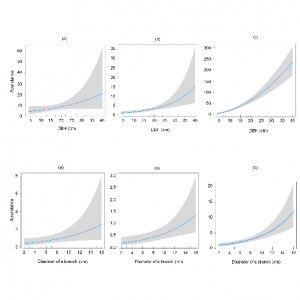 | Kulfan, Ján; Sarvašová, Lenka; Parák, Michal; Zach, Peter Effects of a host tree on movement and distribution of winter geometrid moths (Lepidoptera): thickness of trunks and branches Journal Article Folia Oecologica, 46 (2), pp. 83–90, 2019, ISSN: 1336-5266. Links | BibTeX @article{Kulfan2019,
title = {Effects of a host tree on movement and distribution of winter geometrid moths (Lepidoptera): thickness of trunks and branches},
author = {Ján Kulfan and Lenka Sarvašová and Michal Parák and Peter Zach},
url = {http://ife.sk/wp-content/uploads/2016/10/foecol-2019-0002-1.pdf},
doi = {10.2478/foecol-2019-0011},
issn = {1336-5266},
year = {2019},
date = {2019-01-01},
journal = {Folia Oecologica},
volume = {46},
number = {2},
pages = {83–90},
keywords = {},
pubstate = {published},
tppubtype = {article}
}
|
2018
|
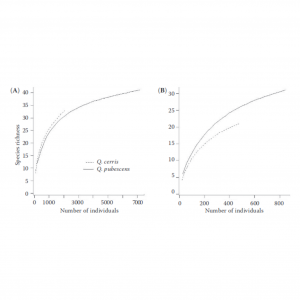 | Kulfan, J; Sarvašová, L; Parák, M; Dzurenko, M; Zach, P Can late flushing trees avoid attack by moth larvae in temperate forests? Journal Article Plant Protection Science, 54 , pp. 272-283, 2018, ISSN: 12122580. Links | BibTeX @article{Kulfan2018,
title = {Can late flushing trees avoid attack by moth larvae in temperate forests?},
author = {J. Kulfan and L. Sarvašová and M. Parák and M. Dzurenko and P. Zach},
doi = {https://doi.org/10.17221/11/2018-PPS},
issn = {12122580},
year = {2018},
date = {2018-01-01},
journal = {Plant Protection Science},
volume = {54},
pages = {272-283},
keywords = {},
pubstate = {published},
tppubtype = {article}
}
|
2016
|
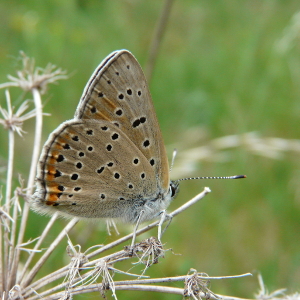 | Sarvašová, L Denné motýle (Lepidoptera, Papilionoidea) lúk kúpeľov Sliač a okolia (Slovensko) Journal Article Folia Faunistica Slovaca, 21 (1), pp. 63-71, 2016, ISSN: 1335-7522. Abstract | Links | BibTeX @article{L.2016b,
title = {Denné motýle (Lepidoptera, Papilionoidea) lúk kúpeľov Sliač a okolia (Slovensko)},
author = {L. Sarvašová},
url = {http://www.ffs.sk/pdf/FFS-21-09-Sarvasova-2016.pdf},
doi = {DOI ffs.2016.21.09},
issn = {1335-7522},
year = {2016},
date = {2016-10-13},
journal = {Folia Faunistica Slovaca},
volume = {21},
number = {1},
pages = {63-71},
abstract = {The research was carried out in a spa Sliač in Zvolenská kotlina basin (central Slovakia) in nine research plots belonging to three categories according to management intensity: (1) intensively mowed meadows, (2) extensive pastures and (3) abandoned pastures under the secondary succession. Butterflies were recorded by transect methods during three seasons in 2009 – 2011. We recorded 1043 adult individuals belonging to 5 families and 46 taxons. Maniola jurtina (Linnaeus, 1758) was the most abundant species. Six species from the Red List of Slovakia were recorded: Iphiclides podalirius (Linnaeus, 1758), Lycaena alciphron (Rottemburg, 1775), L. dispar (Haworth, 1803), Phengaris arion (Linnaeus, 1758), Melitaea phoebe (Denis & Schiffermüller, 1775), Polyommatus bellargus (Rottemburg, 1775) and one pair of species Melitaea aurelia (Nickerl, 1850)/ Melitaea britomartis (Assmann, 1847). The highest butterfly abundance and species richness were in abandoned pastures. In the contrary, intensively mowed meadows were characterized by lowest butterfly abundance and species richness. As for the intensity of management, our research confirmed that the extensively used grasslands and grasslands under the early stages of secondary succession are the most suitable for the butterfly communities. The lepidopterocenosis of spa meadows were similar to that of the city parks. Planting melliferous herbs into flower-beds in park seems to be a good solution how increase biodiversity as these “flower islands” provide insects temporary shelter and nectar source after the all-over mowing of the meadows.},
keywords = {},
pubstate = {published},
tppubtype = {article}
}
The research was carried out in a spa Sliač in Zvolenská kotlina basin (central Slovakia) in nine research plots belonging to three categories according to management intensity: (1) intensively mowed meadows, (2) extensive pastures and (3) abandoned pastures under the secondary succession. Butterflies were recorded by transect methods during three seasons in 2009 – 2011. We recorded 1043 adult individuals belonging to 5 families and 46 taxons. Maniola jurtina (Linnaeus, 1758) was the most abundant species. Six species from the Red List of Slovakia were recorded: Iphiclides podalirius (Linnaeus, 1758), Lycaena alciphron (Rottemburg, 1775), L. dispar (Haworth, 1803), Phengaris arion (Linnaeus, 1758), Melitaea phoebe (Denis & Schiffermüller, 1775), Polyommatus bellargus (Rottemburg, 1775) and one pair of species Melitaea aurelia (Nickerl, 1850)/ Melitaea britomartis (Assmann, 1847). The highest butterfly abundance and species richness were in abandoned pastures. In the contrary, intensively mowed meadows were characterized by lowest butterfly abundance and species richness. As for the intensity of management, our research confirmed that the extensively used grasslands and grasslands under the early stages of secondary succession are the most suitable for the butterfly communities. The lepidopterocenosis of spa meadows were similar to that of the city parks. Planting melliferous herbs into flower-beds in park seems to be a good solution how increase biodiversity as these “flower islands” provide insects temporary shelter and nectar source after the all-over mowing of the meadows. |







